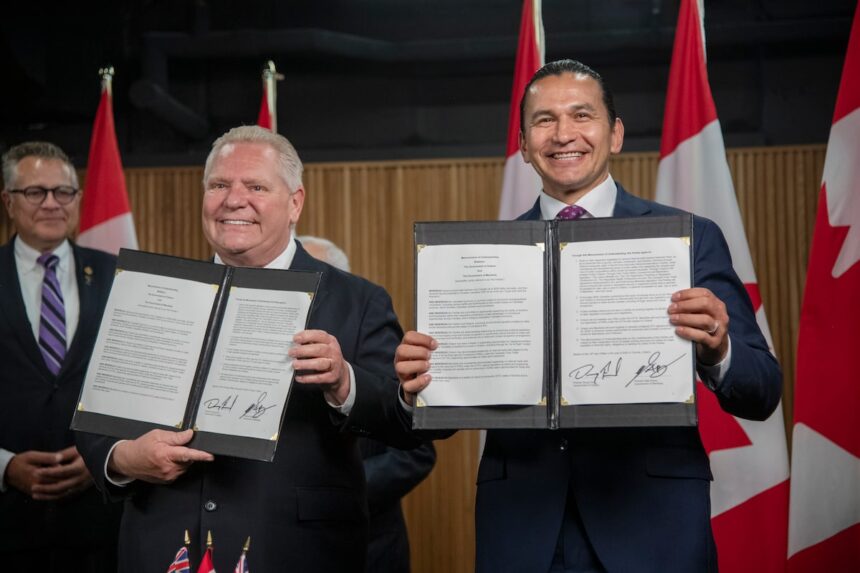In a nation that prides itself on economic openness, Canada’s internal trade landscape tells a starkly different story. Nearly seven years after provincial and territorial leaders ambitiously pledged to dismantle interprovincial trade barriers, progress remains frustratingly sluggish, with businesses continuing to navigate a labyrinth of regulatory differences that fragment our national market.
The 2017 Canadian Free Trade Agreement (CFTA) was heralded as a watershed moment for internal commerce. Leaders stood united in their commitment to harmonize regulations and eliminate obstacles that cost the Canadian economy billions annually. However, as another Canada Day passes, the promise of seamless coast-to-coast trade remains largely unfulfilled.
“We’ve seen some incremental improvements, but the pace of change falls well short of what businesses need to compete effectively,” explains Patricia Goff, Political Science Professor at Wilfrid Laurier University. “Many of the most significant barriers remain firmly in place.”
The economic impact is substantial. According to Statistics Canada, interprovincial trade barriers reduce GDP by approximately $90 billion annually—equivalent to $2,400 per Canadian. These barriers manifest in various forms: differing trucking regulations, inconsistent professional licensing requirements, and provincial alcohol monopolies that restrict market access.
The transportation sector exemplifies these challenges. Trucks crossing provincial boundaries often contend with varying weight restrictions, dimension requirements, and safety standards. A vehicle compliant in Ontario may require modifications to operate legally in Manitoba or Quebec, creating inefficiencies that ultimately raise consumer prices.
Professional licensing presents another significant hurdle. A nurse, teacher, or electrician certified in Nova Scotia may face substantial regulatory obstacles when relocating to Alberta, despite practicing the same profession. While some progress has occurred through mutual recognition agreements, many professions remain siloed within provincial boundaries.
The COVID-19 pandemic briefly accelerated cooperation, with emergency measures temporarily suspending certain restrictions. Several provinces permitted out-of-province health professionals to practice without additional licensing, demonstrating that regulatory flexibility is indeed possible when political will exists.
Trevor Tombe, Economics Professor at the University of Calgary and a leading researcher on internal trade, notes: “The pandemic showed us that many barriers aren’t as essential as previously claimed. When faced with a crisis, provinces found ways to cooperate that had been deemed impossible during normal times.”
The federal government has attempted to catalyze progress through financial incentives and coordination efforts. In 2021, Ottawa established a $21 million Regulatory Reconciliation and Cooperation Table aimed at harmonizing standards across jurisdictions. However, its effectiveness remains limited by the voluntary nature of provincial participation.
Provincial protectionism continues to undermine meaningful reform. Local procurement preferences, while politically popular, restrict competition and drive up costs for public projects. Similarly, agricultural supply management systems and provincial liquor monopolies remain largely untouched despite clear economic evidence suggesting substantial benefits from liberalization.
Some bright spots exist. British Columbia, Alberta, Saskatchewan, and Manitoba have formed the New West Partnership Trade Agreement, creating a more integrated market in Western Canada. This regional approach has demonstrated that deeper economic integration is achievable when political leadership aligns with economic pragmatism.
Digital services represent another area of progress. Professional services increasingly operate across provincial boundaries through digital platforms, circumventing traditional regulatory barriers. This technological end-run around outdated rules may ultimately force policy modernization as digital commerce continues to expand.
As Canada navigates economic recovery and global trade uncertainties, the persistence of internal barriers seems increasingly counterproductive. With an aging population and productivity challenges, eliminating these inefficiencies represents a rare opportunity to boost economic performance without requiring additional government spending.
The path forward requires sustained political commitment beyond election cycles and headline-grabbing announcements. Meaningful progress will demand that provincial leaders prioritize national economic interests over short-term regional considerations—a challenging proposition in a federation where provincial autonomy is fiercely defended.
As Canadians reflect on our economic future, we must confront a challenging question: In a world where global competition intensifies daily, can we afford to maintain artificial barriers within our own borders, or will we finally fulfill the promise of a truly united Canadian market?










